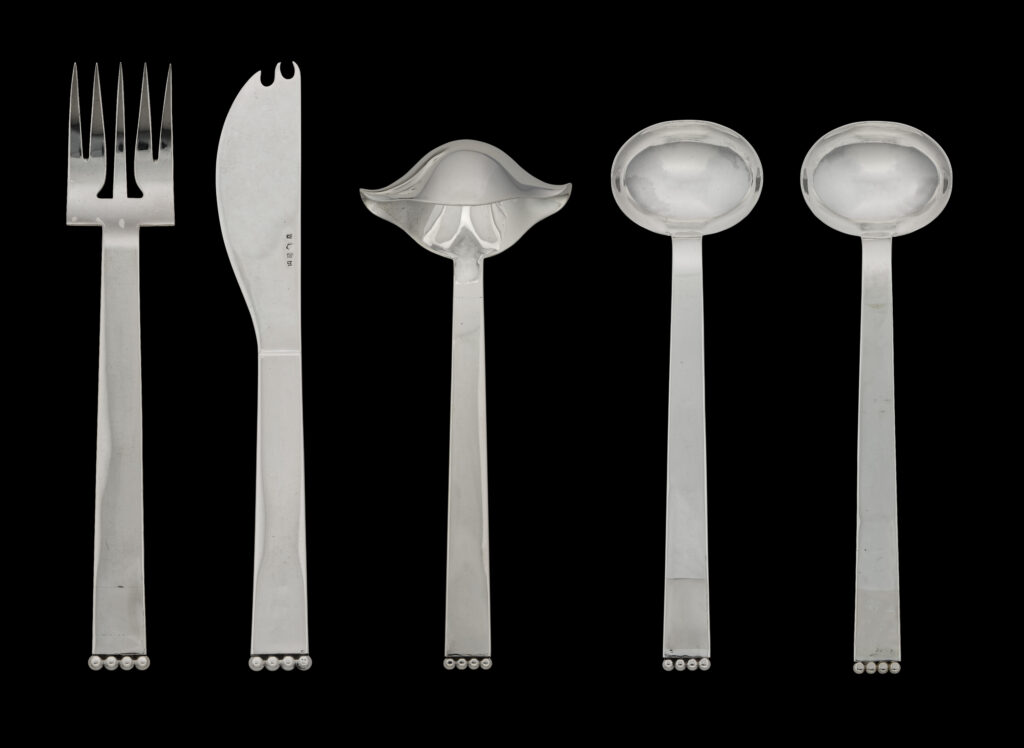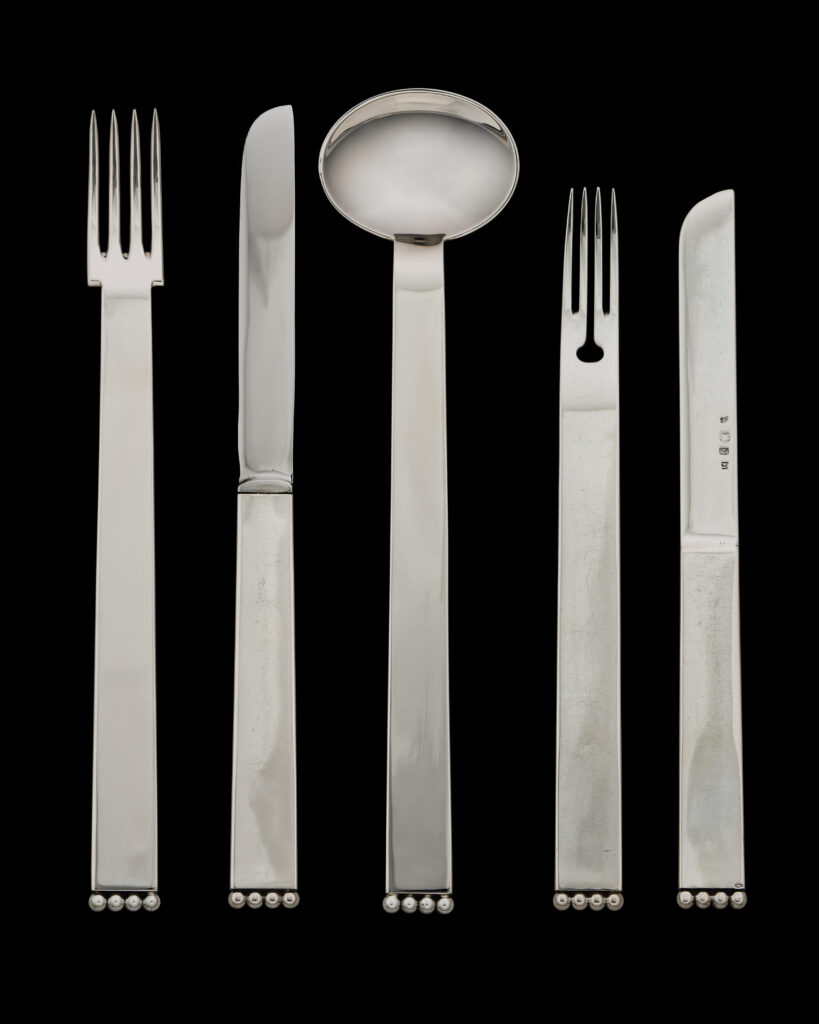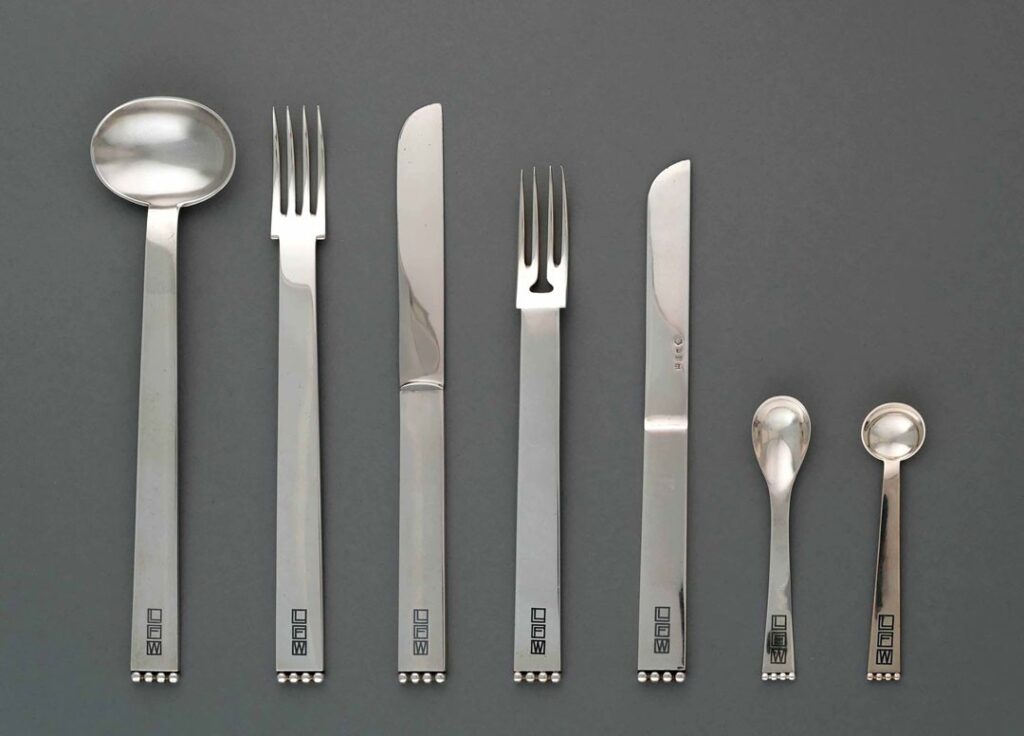
There are few objects that are not only memorable, but also help lead you to understand design and, if you are lucky, elevate your taste when you experience them in person. These objects are unmatched in their beauty—products of design that represent ultimate genius and decisive moments in design history. They are so exceptional in their quality that they express the notion that taste is not in the eye of the beholder but instead is timeless and objective. It takes years of experience to be able to identify this type of greatness, and there is no way to simply pass on the tools needed to achieve a critical eye. You just have to never stop looking and observing, for years, for the rest of your lifetime.
Last week this happened to me when I stood in front of Josef Hoffmann’s Flat Model flatware, presented at TEFAF New York by London-based dealer Yves Macaux. I have been familiar with this design which Hoffman created in the early years of the Wiener Werkstätte, the association that came to bridge art and design in Fin de siècle Vienna. In fact, it was one of the first works he did when co-founding the legendary association in Vienna in 1903, which brought together artists in a workshop environment to produce artistic utilitarian items, including metalwork, leather, furniture, ceramics, jewelry, and more. There is an identical full set of cutlery—the only other known in existence—in the collection of MAK Museum in Vienna and a smaller version at the Neue Galerie, which I have to admit I have never seen one in person. This was the first time for me, and while I knew its greatness from the numerous photos reproduced in design books, standing in front of it was a whole different experience.
This flatware represents Hoffmann at his best because when he co-founded that enterprise, he created the best quality design, which culminated in his Palais Stoclet (the palace of the art) that he built in Brussels. In its early years, the Wiener Werkstätte operated in a three-story building with special metalsmithing workshop, leatherwork, bookbinding, furniture, and a paint shop, all in house. Hoffmann designed everything from furniture to glass, textiles, architecture, and interiors; in my opinion, none have reached the excellence of his metalwork.
Crafted in silver and steel, the Flat Model represents the brilliant way in which Hoffmann the architect forged objects with architectural quality. The only decorations are the four beads of metal attached to the end of each handle; an abstract detail attached to a neoclassical form. A fantastic marriage and one which stood at the core of his vocabulary in those early years of the 20th century. What makes it even more exquisite is the special provenance. This set was made for Fritz Waerndorfer, the industrialis and patron of the arts who financed the foundation of the utopian enterprise. This design was first shown to the public at the 1906 exhibition der Gedeckte Tisch at the Viennese rooms of the Werkstatte, receiving unparalleled attention from the critics. When I was standing in front of Flat Model, I was thinking of what it feels like to dine using those superb forks, knives, and spoons. Food would certainly taste better when using such elegant tools.



I agree with every word you say. Josef Hoffmann is a genius in design, and loved his work from the first minute I saw it (in art books). Thank you